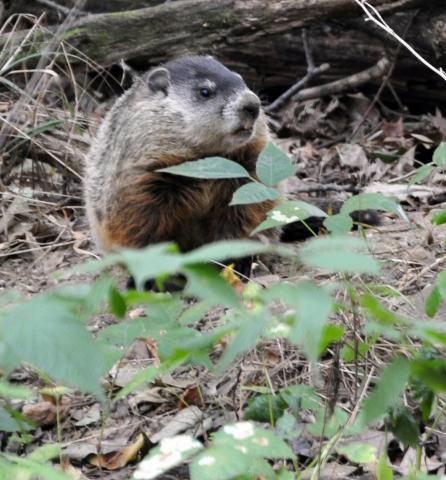Find help...
How to protect my property from woodchuck damage in Vermont | Woodchuck
Vermont > Animal is gnawing bark and clipping twigs from trees and shrubs > Woodchuck
How to protect my property from woodchuck damage
To make your property less attractive to woodchucks and minimize damage:
- Remove piles of wood, brush, rocks, and other debris that might be attractive as den sites.
- Make certain that all garage doors and shed doors are closed to prevent entry, especially those with dirt floors.
- Close any openings that provide access under porches, decks, crawl spaces, or sheds.
- Fencing can be effective in reducing woodchuck damage. However, precautions need to be taken to prevent climbing. Encircle the area you want to protect with a 3-foot tall, heavy poultry wire or 2-inch woven wire mesh fence. To prevent the woodchuck from burrowing into the protected area, bury the wire fencing in the ground a minimum of one foot and/or angle out a section of the underground portion of the fencing 12 to 18 inches from the vertical fence to create an L-shape. Curve the top of the fence outward or bend the top of the fence at a 45-degree angle to create a 9- to 12-inch overhang to deter climbing.
- Electric fencing is another option. An electric fence requires only two strands of wire, usually at 4 inches and 6 to 8 inches above ground. This arrangement allows easy access to the protected area. Battery and solar-powered chargers can be used to power the system. Regularly remove ground vegetation in the vicinity of the fence. Warn children to avoid the electric fence and train pets to stay away.
- Taste and odor repellents may provide some protection to flowers and garden crops.
- Installing tree guards and applying taste repellents may prevent gnawing on outdoor decks, siding, and trees.
- A fenced or invisible-fenced dog will be a deterrent in the area it can access.
- Hunting may control woodchuck populations to help reduce crop damage.
Laws and regulations to be aware of
While we attempt to provide guidance about state and federal regulations pertaining to specific species and control techniques, we do not provide information about local jurisdictions (city, town, county, etc.) where regulations may be more restrictive, especially as it applies to discharge of firearms, transport of animals or use of trapping equipment. Contact your local city or county government to inquire further. No guarantee is made that information (or lack of information) associated with a species or control technique is completely accurate or current. You should become familiar with federal, state and local laws before beginning any wildlife control activities. |
More solutions for woodchuck problems

